AFTER THE EAT
(Sticking Fish & Clearing Line)
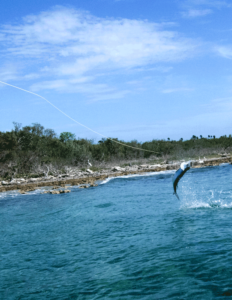 There are so many things that need to go right in order for fly fishing to be successful. It starts with spotting the fish and making the cast but there are many little details that have to go right in order to hook and land that fish. Much focus can be put into casting the fly rod with very little thought on what comes immediately after. For this blog we will be focusing on two of the bigger species because of their speed and strength. Think giant trevally (GT) and tarpon. After you have spotted fish and launched your beautiful cast, what comes next can only be described as a violent explosion of energy. Be ready. When smaller fish run, you can hang on to the line a bit or fight them with your hand until the fish is finally on your reel. Sometimes the angler might even have time to reel in the excess line to make life easier. With larger, stronger fish this is not an option, they take off in a hurry.
There are so many things that need to go right in order for fly fishing to be successful. It starts with spotting the fish and making the cast but there are many little details that have to go right in order to hook and land that fish. Much focus can be put into casting the fly rod with very little thought on what comes immediately after. For this blog we will be focusing on two of the bigger species because of their speed and strength. Think giant trevally (GT) and tarpon. After you have spotted fish and launched your beautiful cast, what comes next can only be described as a violent explosion of energy. Be ready. When smaller fish run, you can hang on to the line a bit or fight them with your hand until the fish is finally on your reel. Sometimes the angler might even have time to reel in the excess line to make life easier. With larger, stronger fish this is not an option, they take off in a hurry.
When the fly is in the water and the fish is about to eat, some novice anglers might completely freeze up or will actually just watch the eat, completely missing the hook set. Sometimes it just happens so fast that its not the anglers fault. It’s especially easy to miss a set when fishing for GT. These fish strike very quickly and require a fast hook set. GT are known to make a super fast decision to spit the fly and swim away.
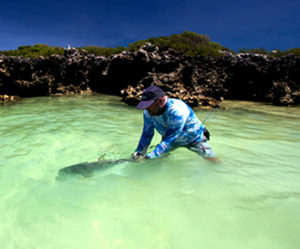 When it is time to set the hook, SET THE HOOK. With larger fish, the hook set is not something to be taken lightly. Set the hook as hard as you can, and then do it again. Do not be afraid to set the hook too hard, it is very rare that an angler will pop a fly off in a tarpon’s mouth.
When it is time to set the hook, SET THE HOOK. With larger fish, the hook set is not something to be taken lightly. Set the hook as hard as you can, and then do it again. Do not be afraid to set the hook too hard, it is very rare that an angler will pop a fly off in a tarpon’s mouth.
OK, the hook is set and now there is a whole new set of issues to deal with. Once the fish is hooked, the most difficult part of the fight begins. Clearing your loops. As the fish rockets away, sometimes jumping, you have to guide your fly line through the eyes and safely back onto to the reel so you can begin the actual fight. If anything gets caught or wrapped, grab yourself a new leader and fly and begin again. The most common mishap is having your fly line wrap around the butt of your rod or the bottom of your reel. There are videos of fly lines wrapping around anglers necks, toes and just about anything else you can imagine but this can a does happen to almost everyone at some point.
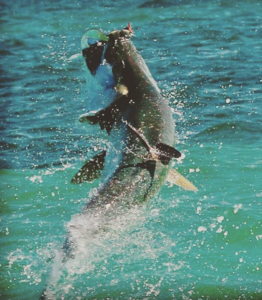 To prevent this hold your rod and your other hand far away from each other. Making a loop with your retrieving hand, letting your fly line pass through. Pinching it when necessary to keep pressure, always keeping tension on the fish. When the line goes tight bring your hands together so the line meets the reel. It’s also sometimes helpful to keep the reel truned to the side and the but of the rod against your arm so the loop cannot sneak on there. Again, there’s a lot that can go wrong once you’ve hooked a 100 pound wild animal. They’re pissed off and looking to break free by any means possible. This step in fighting large fish is often the most difficult part, and usually the most fun. Its happened to all of us and there is nothing you can do, the line wraps around the butt of your rod and you have that feeling of…ugh, did I just do that. Your guide might laugh and tell you to get a new fly, but it’s all part of the game. Think about steps to prevent this while your standing on the casting deck, always be aware of your line, the wind and make sure when you turn to cast or go backhand on a fish, you make the need adjustment to keep you line where you need it.
To prevent this hold your rod and your other hand far away from each other. Making a loop with your retrieving hand, letting your fly line pass through. Pinching it when necessary to keep pressure, always keeping tension on the fish. When the line goes tight bring your hands together so the line meets the reel. It’s also sometimes helpful to keep the reel truned to the side and the but of the rod against your arm so the loop cannot sneak on there. Again, there’s a lot that can go wrong once you’ve hooked a 100 pound wild animal. They’re pissed off and looking to break free by any means possible. This step in fighting large fish is often the most difficult part, and usually the most fun. Its happened to all of us and there is nothing you can do, the line wraps around the butt of your rod and you have that feeling of…ugh, did I just do that. Your guide might laugh and tell you to get a new fly, but it’s all part of the game. Think about steps to prevent this while your standing on the casting deck, always be aware of your line, the wind and make sure when you turn to cast or go backhand on a fish, you make the need adjustment to keep you line where you need it.
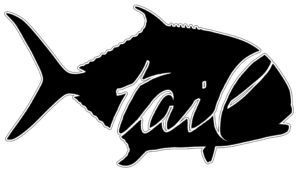
SUBSCRIBE TO TAIL FLY FISHING MAGAZINE

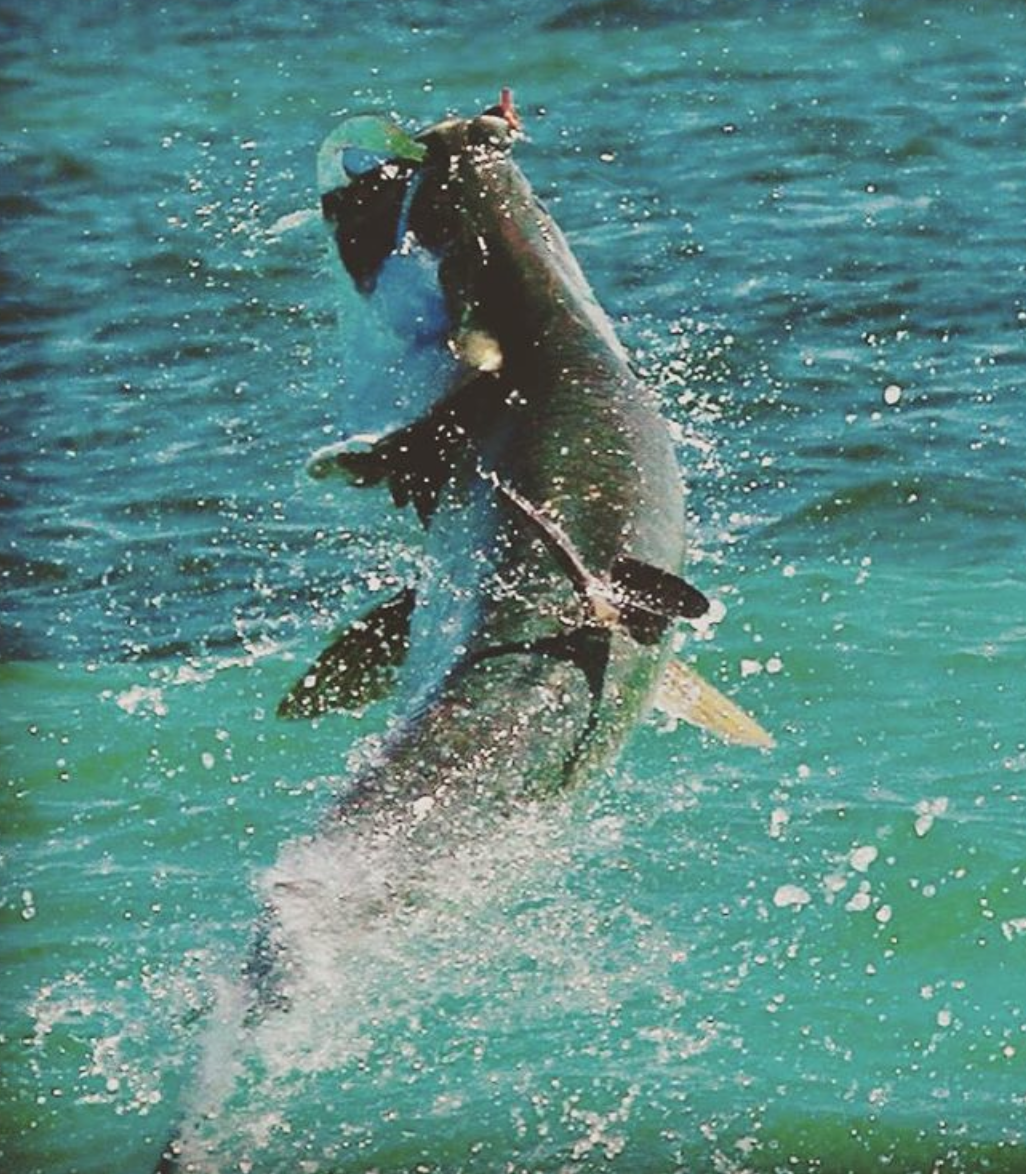

Good advice. 2 years ago I hooked a decent bone that sped off, and while clearing line, a loop caught around one of my rod rings. Luckily I hadn’t taped the joins, and half the rod sailed out about 40 yds! No damage occurred and I landed the fish! I never tape the sections now.
Most rods do that. We never tape joints as a practice. Thanks for commenting.